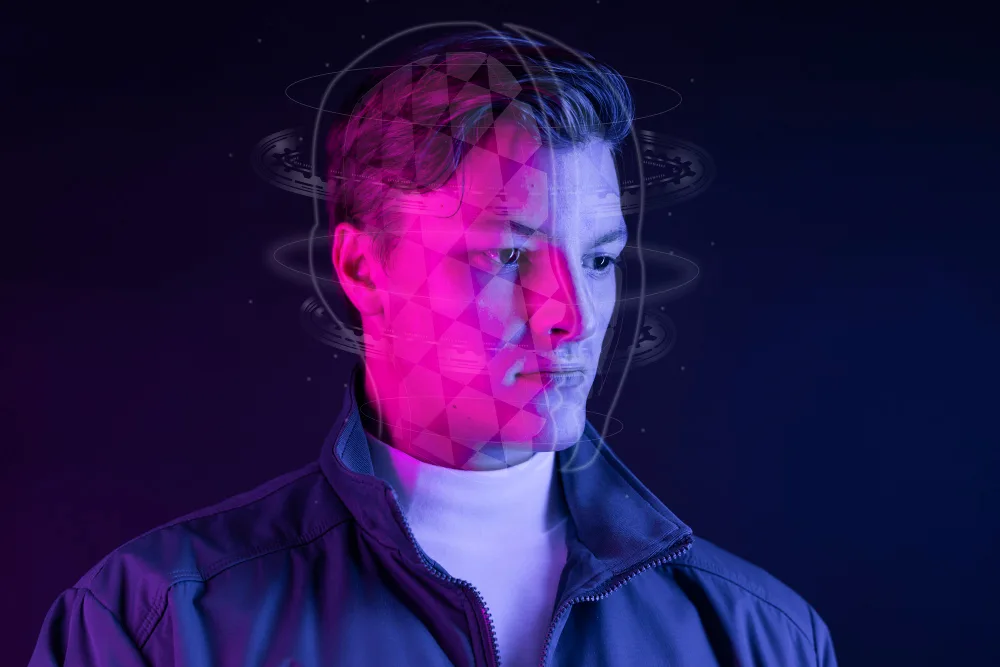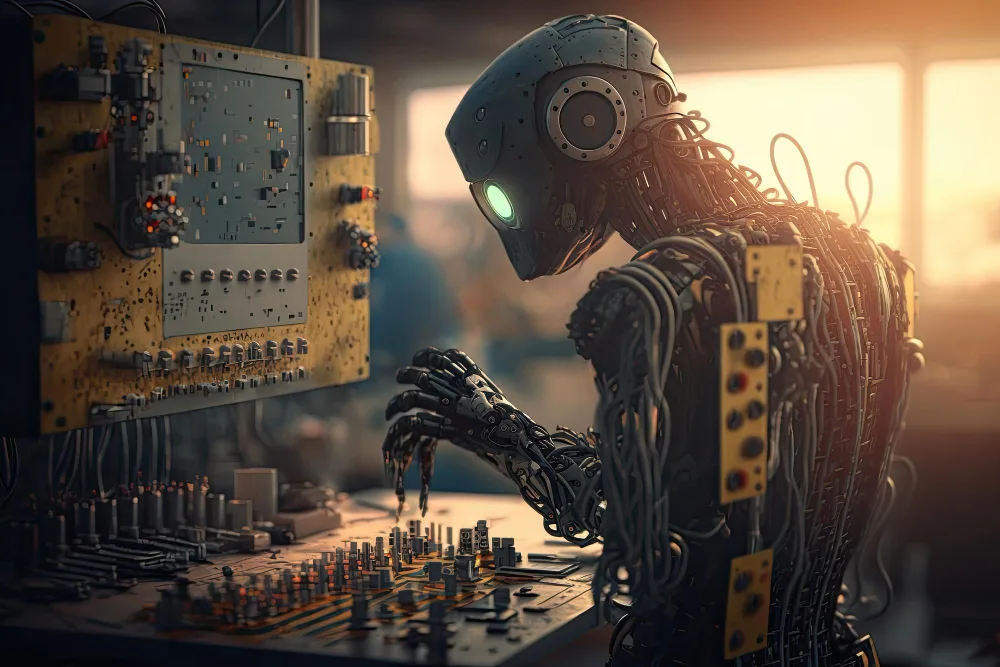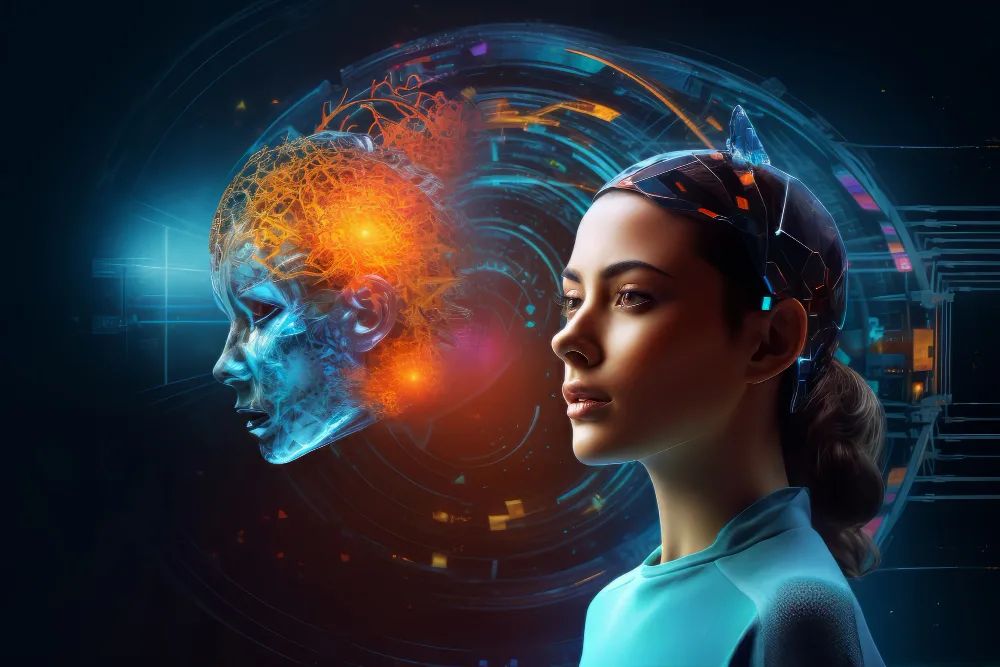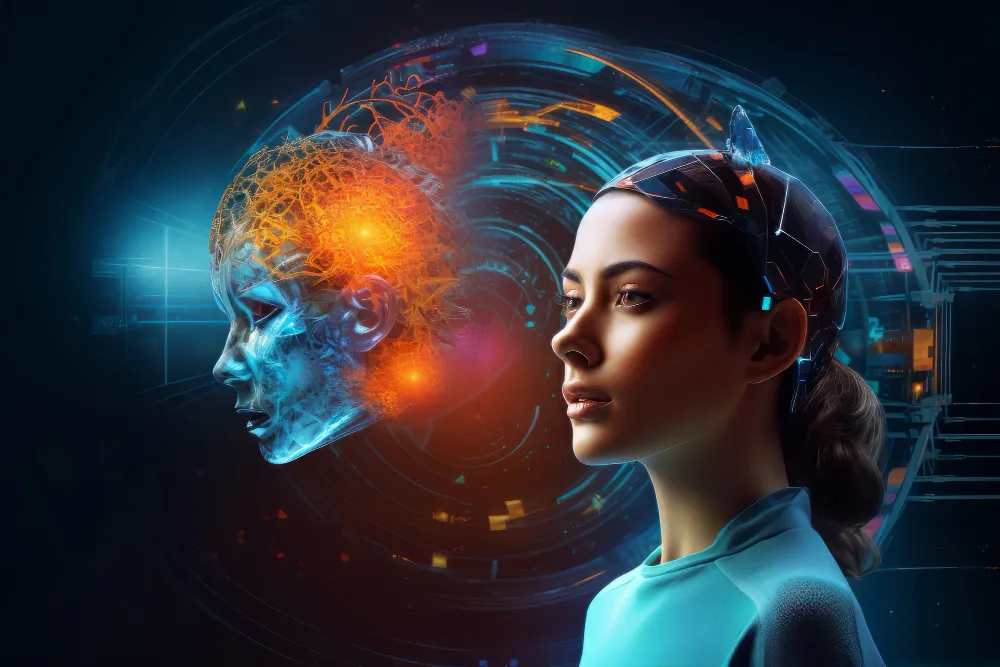What does generative AI tell us about the human mind? This question was the topic of the article by Andy Clark, a cognitive philosopher and professor at the University of Sussex. In his piece, Andry discusses the parallels between generative AI like Dall-E and ChatGPT-4 and human thinking.
Generative AI and Human Mind Difference and Similarities in AI and Human Cognition
Generative AI models can predict patterns in data to create new content. This is similar to how the human brain predicts sensory information. However, unlike AI, humans predict in the context of action, learning from the consequences. By being unable to directly experience or learn from their actions, AIs can only follow a ‘verbal fossil trail’ left by humans.

Potential of AI
Could AI evolve to include action-based learning? Some examples include online algorithms affecting buying or voting behaviors, but they still lack the direct physical interaction that shapes human cognition.
Possibilities and Limitations for AI Development
Could AI develop survival instincts, form communities, or develop self-awareness? While these are not driving AI development, they are not entirely off-limits for future AI evolution.
While generative AI can mimic certain aspects of human thinking, there is a significant gap in AI’s “thinking “capabilities. AI, in particular, lacks action-based learning, physiological state integration, and cultural context.
To explore the full article, please follow this link.

Augmented Experts on AI Limitations Compared to Human Thinking
The core of this article is the argument that AI, while capable, cannot fundamentally experience the world as humans do. As vividly described, AI follows the ‘verbal fossil trail’ of human experience. This suggests that in an era of AI-generated content, the content that will truly stand out is content rooted in genuine, lived human experience and original insight.
It is not an argument against AI use. On the contrary, it shows that our goal should be to embrace AI as a tool to optimize routine tasks. By doing so, we free up valuable time for direct experience and learning through living. AI is not a replacement for human creativity but a pathway to greater freedom, letting us engage in creative work and strategic decision-making.

A practical application of this philosophy is ‘Augmented Experts.’ Our platform uses AI to conduct preliminary web research and create outlines, which are complemented and refined by vetted industry experts. This synergy of AI and human expertise produces high-quality content in a fraction of the time compared to traditional methods. Here, AI handles what it does best – processing and managing existing information – while human experts contribute something AI cannot: unique insights and perspectives gained from real-world experiences.
This approach serves as an example of how we can leverage the strengths of AI while adding a dimension that only human interaction and experience can provide, resulting in efficient and effective content.



